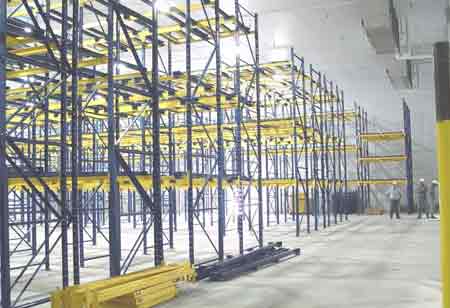Thank you for Subscribing to Construction Business Review Weekly Brief

The Rising Demand for Cold Storage Facilities
Globally, cold storage solutions are in high demand. Consumer behavior has changed partly due to pandemic restrictions, which have driven consumers to stock up on frozen goods and online grocery shopping. As a necessity, it has become a habit that isn't likely to stop anytime soon.
The investment in a refrigerator warehouse or cold storage facility was once considered unattractive due to high construction costs, enormous power demands (and expensive, complex infrastructure), and relatively low user demand. In highly populated areas, facilities' demand increased quickly during the pandemic.
CommercialEdge's "National Industrial Report" indicates that cold storage space is currently under construction in nearly seven million square feet across the country, and another 10 million is planned. Over $2 billion in sales volume were generated last year by cold storage properties.
Pandemic drives demand for cold storage
Food drives that demand. Consumers have avoided restaurants over the past two years and cooked at home. The need for cold storage facilities near population centers grew.
Fresher and sustainable food has become more popular since 2020, with consumers choosing more fruit, vegetables, and seafood with short shelf lives. A large segment of the population is also stocking up on food items that can be frozen for an extended period.
Pharmaceutical companies also triggered excessive demand for refrigerated storage space for vaccines and other raw materials.
Increased costs and delayed materials prolong construction
Cold storage and refrigerator warehouses can cost up to $200 per square foot compared to $100 per square foot for specific warehouse products. Cold storage buildings can take nearly six months to build, and retrofitting a dry warehouse into a cold facility is rarely cheaper or faster than ground-up construction. According to CommercialEdge, magnesium production—an essential chemical element used in cold storage construction—may be curtailed due to its harmful environmental effects.
Cold storage Vs. traditional spec warehouse model
The varying needs of end-users can complicate speculative cold storage projects. An organization cannot predict how much freezer space, cooler space, and room temperature space it will need, nor the size and complexity of its production and packaging areas.
Users want to outgrow their current space or move from a 3PL to their warehouse, but the cost is more than they're prepared to take on alone. The next few years will be interesting to see what happens with cold storage buildings.
Fractionalization maximizes ROI
A Bethesda, Maryland-based firm now views cold storage as a contrarian asset class after studying cold storage facilities in numerous cities nationwide.
Cold storage warehouses were typically leased to one large tenant, similar to dry warehouses. It is difficult and expensive to build spaces for smaller users of this product type because of the scarcity and the high investment per square foot required.
A fractionalization tactic involves subdividing a refrigerated space into smaller spaces and leasing these at higher costs than what would be charged to an end-user of a full building. For control over inventory activity, the landlord can also use an "Iron Mountain" approach where he or she charges additional fees for each pallet or box of inventory that comes and goes from the space—to account for higher turnover and loading dock scheduling.
For example, a restaurant in the area could now rent out precisely what they need without investing capital in cold storage facilities in their backrooms.
The multiplier effect of this approach would result in significantly higher leasing costs for landlords or investors. The target audience for this use is also boutique food manufacturing companies. Pharmaceutical companies typically build their cold storage facilities or lease the entire building, so they're not good leasing candidates.








